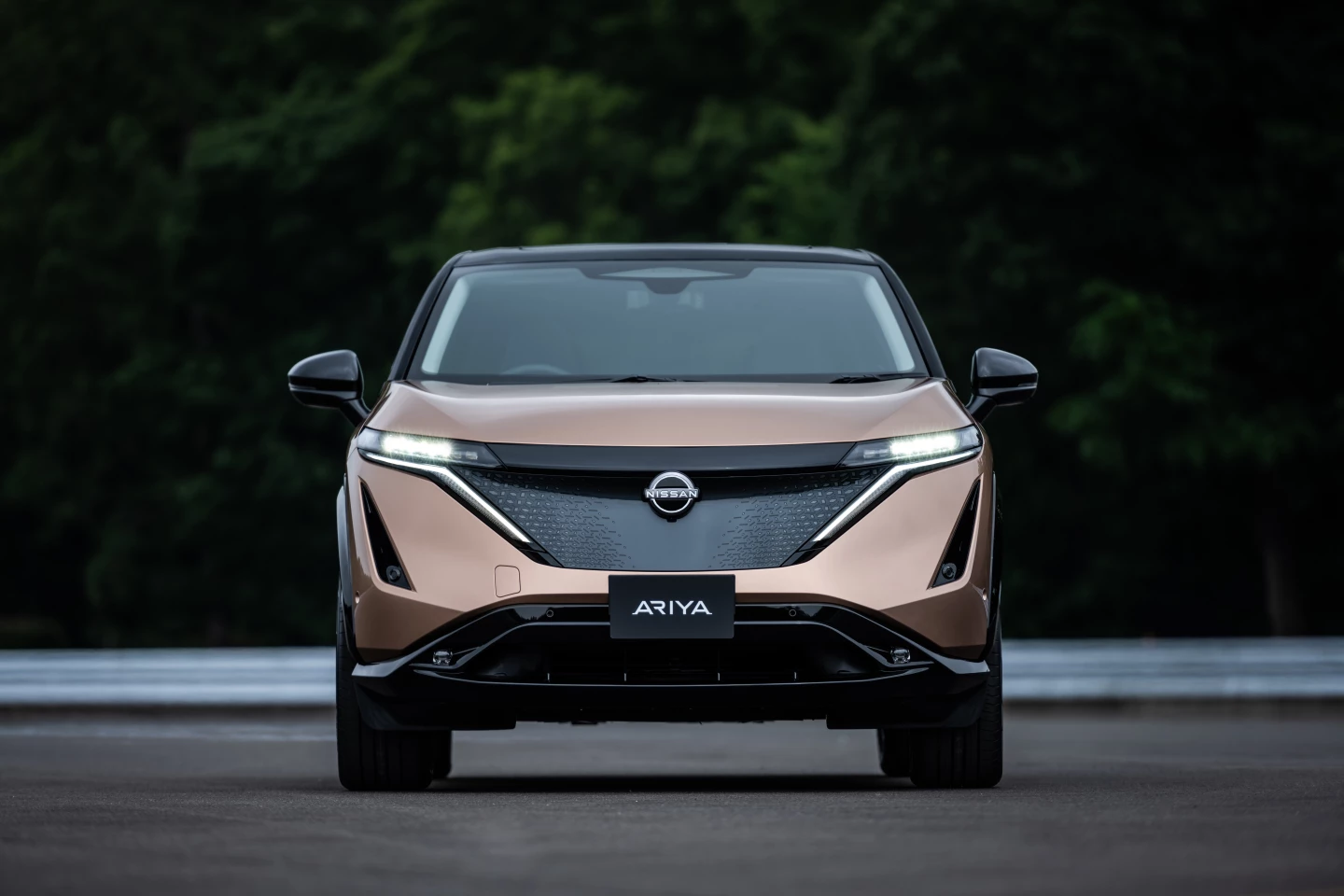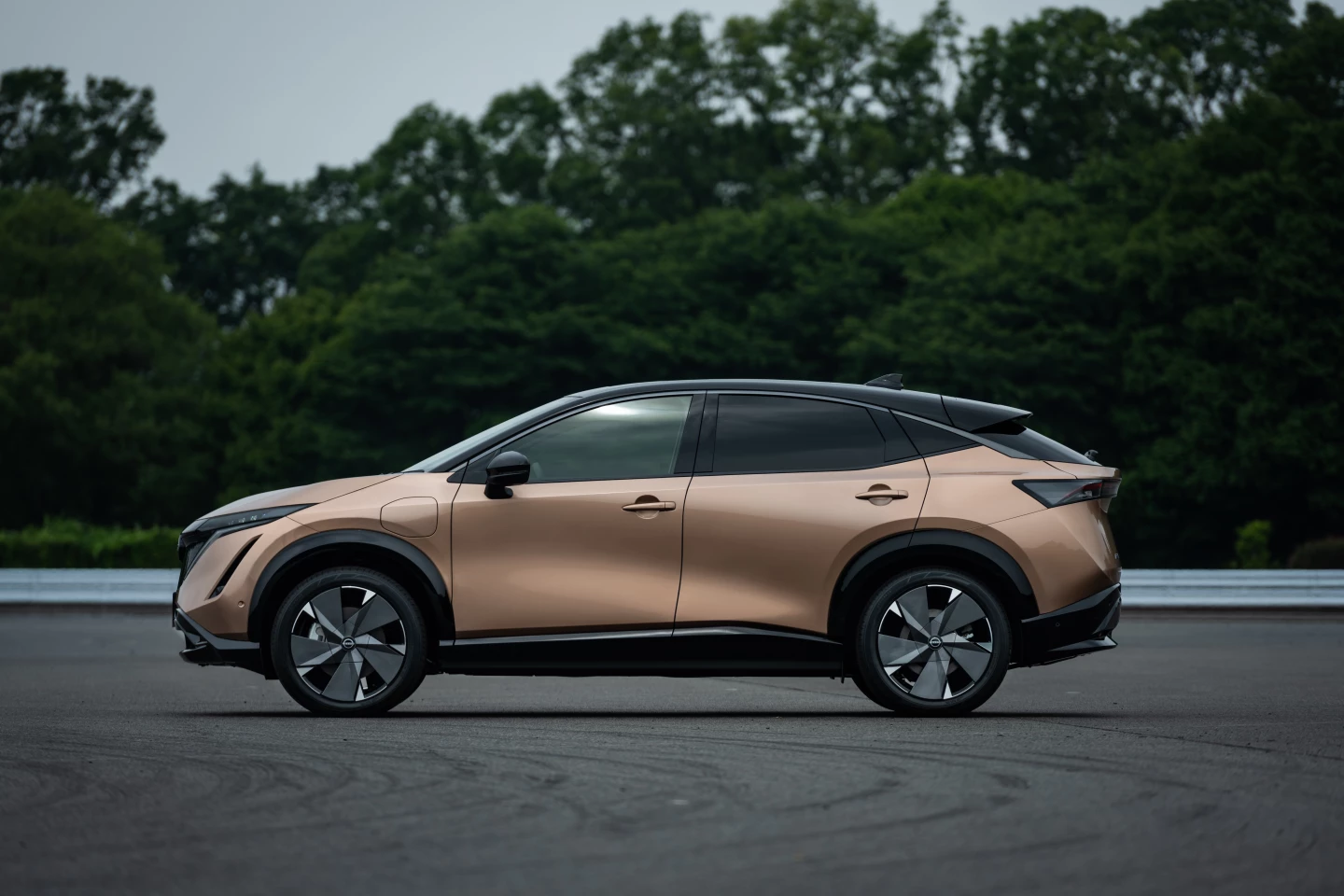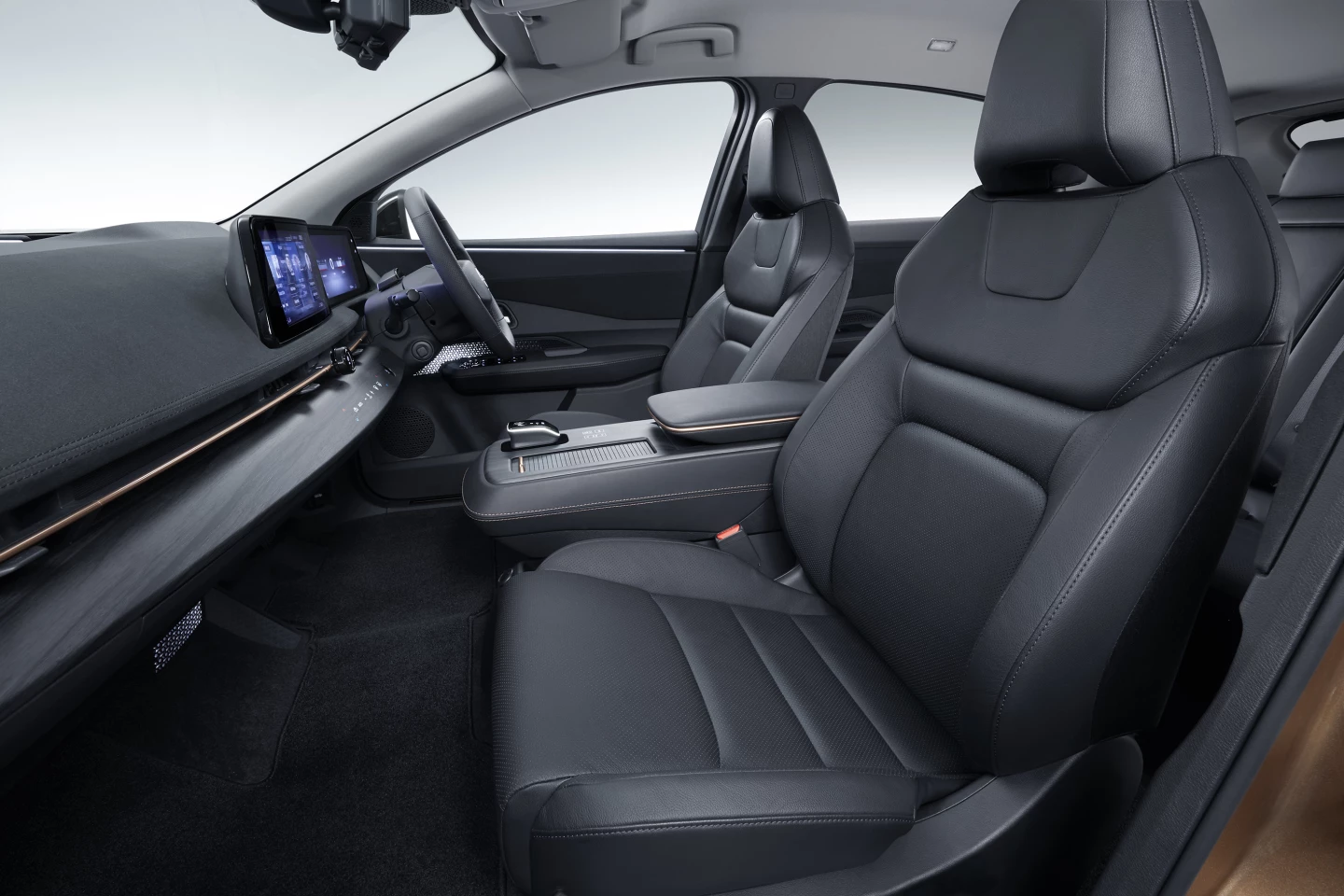We got our first look at Nissan's plans for an all-electric crossover SUV at the 2017 Tokyo Motor Show, when it revealed the IMx. Two years later the concept had grown into the Ariya, and now the company's first all-electric crossover is going into production.
Initially heading for the Japanese market in mid-2021 for around ¥5 million, the production Ariya is built on a new electric vehicle platform, and will be available in two-wheel drive (2WD) and all-wheel drive (AWD) variants, each with two battery capacity options.
The 65-kWh 2WD vehicle is reported to offer up to 450 km (279 mi) of WLTP per charge range, outputs 160 kW and 300 Nm (221 lb-ft) of torque and gets from standstill to 100 km (0-62 mph) in 7.5 seconds. The 90-kWh model increases the range to 610 km (379 mi), ups the output to 178 kW but is a tenth of a second slower in the sprint. Top speed for both models is 160 km/h (99.4 mph).

The 65-kWh AWD Ariya can manage up to 430 km (267 mi) on a single charge, outputs 250 kW and produces 560 Nm (413 lb-ft), and gets up to 100 km/h in 5.4 seconds, while the 90-kWh version rolls for 580 km (360 mi), outputs 290 kW and 600 Nm (442 lb-ft), and is the zippiest of the bunch with a run up to 100 km/h in 5.1 seconds. Both of these flavors top out at 200 km/h (124 mph).
The overall dimensions of all models are the same at 4,595 x 1,850 x 1,655 mm (181 x 73 x 65 in), with a 2,775-mm (109 in) wheelbase, and weight varies between 1,900 kg and 2,200 kg (4,188 - 4,850 lb) depending on model and equipment. Nissan says that weight distribution is near 50:50, with a flat aerodynamic underbody contributing to stability and a relatively tight turning circle that should help to make inner city travel less stressful.
Driver-assist technologies include the e-Pedal functionality first launched in the Leaf that allows drivers to control acceleration and deceleration using one pedal; ProPilot 2.0 hands-on driving aid that helps drivers stay in the middle of a lane, maintain a safe distance from the vehicle in front, and makes stop-and-go traffic less of a chore; and ProPilot Remote Park. Over-the-air firmware updates will help future-proof the vehicle.

The exterior comes in nine two-tone color combos, each with a black roof, as well as five full-body color options. Nissan has replaced the grille found on gas-powered vehicles with a solid shield that protects the ProPilot sensors, and sports a Japanese kumiko pattern. A redesigned Nissan badge sits at the center, which lights up when the vehicle is ready to go thanks to 20 LEDs.
Squinty LED headlights merged with turn signals sit on either side of the vehicle's V-motion front, while the blocky rear features one-piece thin strip lighting that glows red when the vehicle is in use. The crossover rolls on five-pronged 19-inch aluminum wheels (though 20-inch variants are available).
Inside, Nissan has aimed for a cafe lounge-like feel where occupants can look forward to a spacious ride, with the electric architecture providing a flat, open floor, lots of legroom and a cabin free from obstructions. It will be quiet inside too, thanks to a combination of the electric drivetrain and Nissan making use of sound-absorbing materials.

In front of the driver is a 12.3-inch instrument cluster and 12.3-inch display that put system, navigation, and infotainment in view, and a head-up display has also been included, projecting line of sight trip info with "one of the largest full-color displays in the segment."
There's a distinct lack of buttons and switches in the cabin, with the center dash being treated to capacitive haptic switches instead. The center console is home to a new palm-friendly shifter for engaging three drive modes, and there's a wireless smartphone charging pad within the storage compartment.
Driver seating preferences, steering wheel and sliding center console adjustments can be stored to a unique profile so that everything is just right as you enter the vehicle. There's hybrid voice recognition for natural language interaction with the crossover's assistive tech, as well as asking Amazon Alexa to rock the cabin, make calls or organize schedules.
Elsewhere, the 2WD models offer more luggage capacity than the AWD vehicles – 408 L for the AWD and 466 L for the 2WD. And drivers can remotely schedule routes, check battery status, set the climate controls and more using a companion mobile app.
As mentioned earlier, the Ariya is expected to launch in Japan toward the middle of next year for an estimated starting price of about 5 million yen. The video below has more.
Source: Nissan














